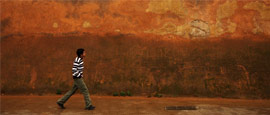Casablanca History
Casablanca began life as a Berber settlement some 3,000 years ago, before the Romans took possession of the area shortly before the death of the first Emperor Augustus. They had already established the port of Anfa some time before, and would continue to operate around Casablanca until the 5th century.
By the 8th century, the Berber kingdom of Barghawata had taken over Anfa, followed by the Amoravids in the 11th century. The town became important again under another Berber dynasty, the Merinids, who used it as a vital port.
The Portuguese conquered and destroyed it in 1468 AD due to its links to piracy, then built a fortress there in the 16th century. The settlement that developed around it was known as Casabranca, but the Portuguese were under constant attack from local tribes and are thought to have abandoned the town after an earthquake in 1755.
The medina was built up by Casablanca’s new ruler, Sultan Sidi Mohammed Ben Abdallah, in 1770. The Spanish are said to have aided construction of the fortifications. In the 19th century, Casablanca grew through trade with Europe, until the French conquest at the start of the 20th century.
Under the French protectorate, Casablanca mushroomed into a city of 100,000 by the 1920s. The vision of French governor Marshal Lyautey launched a massive half-century project that rebuilt the city and its facilities until they outshone those of Marseille, the port that had been the inspiration.
As romanticised in the legendary eponymous film starring Humphrey Bogart and Ingrid Bergman, Casablanca was an important strategic port town in WWII. The famous Anfa Conference took place here in 1943, where Churchill and Roosevelt discussed the progress of the war.
Morocco gained independence from France in 1956, but Casablanca maintained its colonial flair and is regarded as one of the country’s most European cities. It has grown into the financial centre of Morocco, where most business is conducted, and has recently worked to develop the tourist industry. This has, in part, led to massive renovation works on the medina.
Did you know?
• Despite being set in Casablanca, none of the eponymous 1942 film was shot in Morocco.
• Due to the period under French rule, Casablanca boasts some of the most extraordinary art deco architecture in the world. Meanwhile, the Habous district was an attempt by the French to combine Moroccan style with French ideals, making for a beautiful faux-medina.
• Built between 1986 and 1993, Hassan II Mosque is perhaps the finest contemporary example of Islamic architecture. It was in part conceived to provide employment for thousands of traditional artisans.
Do you have any Feedback about this page?
© 2025 Columbus Travel Media Ltd. All rights reserved. No part of this site may be reproduced without our written permission, click here for information on Columbus Content Solutions.




 You know where
You know where